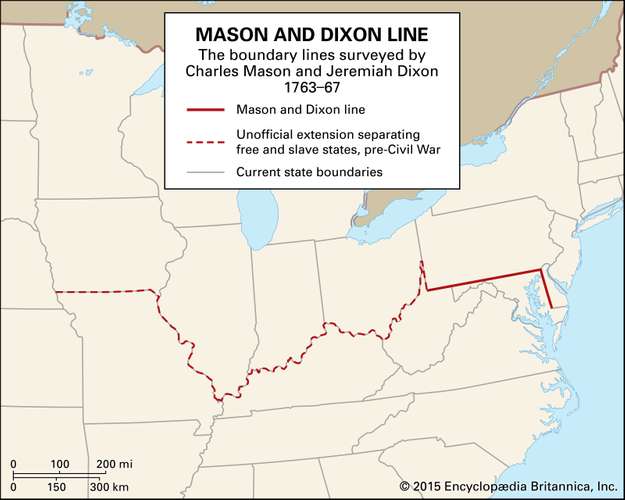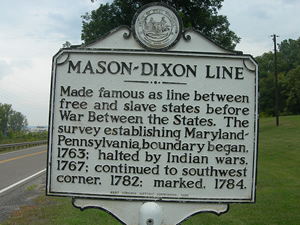Department
of English
Faculty of Arts,
Chulalongkorn University
Sons of the Prophet
(2012)
Stephen
Karam
(March 26, 1970 – )
Notes
Sons of the Prophet was
originally commissioned by the Roundabout Theatre Company, New York, NY
and produced in association with the Huntington Theatre Company, Boston,
MA. It was first performed in Boston, Massachusetts on April 13, 2011.
Prologue
66 deer decoy:

Regular Standing Deer Decoy |
- decoy (Merriam-Webster)
1 hunting: a pond into which wildfowl are lured
for capture
2: someone or something used to lure or lead another
into a trap
the commander of that sub … took us to be a decoy— H.
A. Chippendale
especially, hunting: an artificial bird used to attract
live birds within shot
3: someone or something used to draw attention away
from another
had a decoy distract the guard
- "Regular
Standing Deer Decoy," Custom Robotic Wildlife
The standing whitetail deer is the most popular product we
create. Weighing in at only 22 pounds, it is extremely easy to
transport and set up while being very durable. The antlers are
removable so the decoy can be used as a doe or buck. Deer
decoys now come standard with an increased rotation servo
motor, providing approximately 180 degree movement of the
head. The regular whitetail deer decoy simulates a 140–150
pound looking deer.
- Todd Amnrud, "6 Tips for Using Deer Decoys," Mossy
Oak Gamekeepers, 20 Oct. 2017.
There aren’t many hard & fast rules when it comes to
decoying deer; however, you can put the odds in your favor by
using these tips.
1.The More Realistic The Better
Cheap decoys may work, but the more realistic looking the
better.
2.Decoy Posture
Decoy posture must backup the scenario you’re trying to pull
off. Some decoys look as if they’re so on edge they’re
about to bolt. A feeding decoy, bedded decoy or any posture
that doesn’t appear to be alert or aggressive will typically
work most of the time.
3.Realistic Settings
Set up realistic settings. As an example, to depict a chase
scenario you may want a more aggressive looking decoy. I like
to place a small buck decoy standing over a bedded doe decoy -
making it look as if they stopped to take a break. Think about
how the whitetails might use an area.
4.Movement
“Lack” of movement is a key! This can easily be cured with
commercial tail kits, a white hanky, or a real deer tail and
fishing line. I learned from the Wensel brothers to use
chicken feathers. Tie a short string to either the feather or
hanky and then tape the string to the decoy; this leaves it
free to swing in the wind.
5.Use Scent
The use of scent and calling helps dearly with decoys. Bucks
almost always drop downwind to scent-check the set-up. If they
drop downwind and smell some Special Golden Estrus around your
doe decoy, or some Golden Buck with your buck decoy, it helps
seal the deal.
6.Set Up for The Approach
Place the decoy facing you and keep it as scent-free as
possible. Most of the time two deer will approach one another
with necks stretched out, nose to nose. If he approaches in
this way, it should leave you with a nice quarter-ing-away
shot.
|
Scene 1 On Work
66 football's big here:
- big (Merriam-Webster)
1 a: large or great in dimensions, bulk, or extent
Ex. a big house
also: large or great in quantity, number, or amount
Ex. a big fleet
b: operating on a large scale
Ex. big government
c of a letter: capital sense 1
2 a: filled with or characterized by enthusiasm and interest
Ex. I'm a big fan of soy foods but urge you to choose them
wisely.— Andrew Weil
: active and enthusiastic
Ex. My mother is a big baker, and so was my grandmother …—
Melissa Parks
Ex. I'm not a big shopper, so for me to actually like a store
is really saying something.— Matt Cameron
b: expressed in an enthusiastic or unrestrained way: hearty
Ex. greeted me with a big hug
3 a: chief, preeminent
Ex. the big issue of the campaign
b: of great importance or significance
Ex. the big moment
c: magnanimous, generous
Ex. was big about it
d: outstandingly worthy or able
Ex. a truly big man
e: imposing, pretentious
Ex. using big words
also: marked by or given to boasting
Ex. big talk
4 informal: more advanced in age: older
Ex. my big brother
: more mature
Ex. His teachers all told me he was excited about riding the bus,
feeling like a big boy now.— Laurie Frey
5: popular
Ex. soft drinks are very big in Mexico— Russ Leadabrand
6 a: of great force
Ex. a big storm
b obsolete: of great strength
Ex. Sir Launcelot was big and strong again.— Thomas Malory
7 a: pregnant especially: nearly ready to give birth
Ex. big with child
b: full to bursting: swelling
Ex. big with rage
c of the voice: full and resonant
8: full-bodied and flavorful —used of wine
66 Mason-Dixon line:

Mason and Dixon Line

Mason-Dixon Line sign
|
- "Mason-Dixon Line," Encyclopædia
Britannica
Mason-Dixon Line, also called Mason and Dixon Line, originally
the boundary between Maryland and Pennsylvania in the United
States. In the pre-Civil War period it was regarded, together
with the Ohio River, as the dividing line between slave states
south of it and free-soil states north of it.
- Kathryn DeVan, "Our Most Famous Border: The Mason-Dixon Line,"
Pennsylvania Center for the Book (2008)
The marker stands to show where the North ends and the
South starts. However, the story behind the boundary line is
bitter, hostile and, at times, violent; and the story dates
back to the mid-17th century.
|
75 Wait—who's Bobo?...A
circus clown: A funny reference to Bozo the Clown
|
|
- "Clowns," The Guide to United States
Popular Culture, edited by Ray B. Browne, and Pat
Browne, U of Wisconsin P, 2001, p. 183.
One of America's most famous clowns is Bozo the Clown. Bozo
became a fixture in American homes due to his children's
television program which began in 1959. Larry Harmon, the man
behind the clown, smartly adapted Bozo to changing times, and
also licensed others to perform and make appearances as Bozo
under his strict supervision.
- Joe Silvia, "Who Remembers...Bozo the Clown?," New
Bedford Guide (2013)
One of those shows [children's favorite weekday morning shows]
was Bozo the Clown also known as Bozo’s Big Top or Bozo’s
Circus, which spun off “Bozo: The World’s Most Famous Clown”
animated cartoon series. The character of Bozo was created –
believe it or not – in 1946, by children’s storyteller Alan W.
Livingston. His medium was the first of its kind: an
illustrative book accompanied with an album.
The first televised episode of Bozo was in 1949 on KTTV Los
Angeles. The show’s rights were purchased by a Larry Harmon in
1956 who saw the show’s massive potential. The show became
popular enough that it expanded into franchises – as opposed
to syndication. This meant that instead of broadcasting the
Los Angeles version of the show, local stations could produce
their own version with their own Bozo.
|
|
Comprehension Check
Scene 1 On Work
- What does the U.S. state Alabama
mean or represent that Gloria calls Pennsylvania "Alabama of
the North"? (66)
Scene
2 On Pain
Scene
3 On Talking
- What does Joseph say is the
origin of his family name Douaihy? (72)
|
|
Study Questions
- What is
"the point of the matter" in scene 1 On Work?
- How does
Charles's multiple names for Joseph affect the play?
- In what
ways are characters (and events) tied to one another? What
factors bind them?
- At what
points are connections questioned, disputed or disavowed?
What about?
- What assumptions or predictions
do characters make about each other or about the future?
When are these accurate and when are they botched? What are
the consequences of these "prophecies"? How do they play out
or are resolved?
- Karam indicates in the "Author's
Note" for productions to "Eschew broad comedy and
characterizations" (66). How does the text refuse or disrupt
general character types? How does the playscript enable
comedy and laughter that does not make fun of individuals or
of situations or circumstance in a denigrating way? What do
characters joke and tease about? Why does that rough
handling individualize them rather than stereotype them? How
does the kind of humor that Karam encourages create sympathy
rather than ridicule? Some scenes to study:
- The exam room trick at the end
of scene 5 On Friendship:
CHARLES. Jo—
Joseph jolts his whole body and opens his eyes, scaring
the crap out of Charles. Successful ambush. Charles
cannot believe Joseph would joke at a time like this.
Joseph finds it very funny. Charles was so scared!
Charles goes to smack Joseph—but Joseph grabs his arm,
makes him laugh involuntarily through an arm
restraint/tickling routine he's executed before.
Finally, Joseph shows him some mercy. Charles moves
away, still very upset. Joseph loves how angry Charles
is, finds it funny to watch him stew. [...] (80)
- The board meeting in scene 6
On Reason and Passion that begins,
Simultaneously mispronounced:
BOARD MEMBER #1 (DUH-way-ees). Douaihys
BOARD MEMBER #2 (duh-WHY-hees). Douaihys
- Communication
- Look at
moments of incomprehension in the play. What prevents
understanding in each instance? Who does not get the
meaning or the message being expressed?
- Look at
moments of realization, such as when a character
suspects something and begins to see its reason, when a
character is gradually or suddenly clued in to what is
going on, what is wanted of him/her, or what something
means. How does the character come by that knowledge or
"enlightenment"? Through what means is information,
emotion, or intention conveyed? How much is verbal
utterance a part of that expression or exchange? How
much are other forms of communication?
- Where
is there a mismatch between language and intention?
Insulting language between the brothers Joseph and
Charles, for example, gives a variety of impressions,
most of which is not offensive. The sibling trash talk
overheard by Timothy at the bus station causes him to
smile:
JOSEPH. Yeah I'm in a bus station that smells like
urine, I can't have an emotional moment with you
now,/I'll be home soon, okay?
CHARLES. You're an asshole. yeah, also I bought
the Indo-China map using your credit card,/sorry.
JOSEPH. You are such a shit, good-bye.
CHARLES. Bye you look like a lesbian bye.
Charles hangs up, disappears. Joseph notices Timothy
smiling. (71)
Also in extension to this, where does the language not
correspond to meaning? When do words not signify what
they apparently say? In other words, when are characters
evasive or indirect in their speech? Why do they not say
outright what they want? Some scenes to consider:
- The
exchange between Gloria and Joseph in scene 1 On Work
- The
exchange between Joseph and Timothy at the bus station
in scene 3 On Talking
- Gloria's
visit to the Douaihy home and her conversations with
different family members in scene 4 On Home
- How is overlapping dialogue
used in the play and to what effect?
- When are characters angry?
What about? How is that anger dealt with?
- What is the role of religion,
scripture, saints, hymns or prayers to characters who
"stopped going to church" (70) or are not religious?
- Compare the titled scenes with
their associated Gibran poem(s). What is different in their
stories, messages, tropes, tones, and presumed audience?
What is similar or maintained in Karam's play?
|
Review Sheet
Characters
Joseph Douaihy,
Joe –
"29" (66); "he has the body awareness of an athlete" (66)
Charles
Douaihy –
"18" (66); student at Nazareth High
Bill
Douaihy –
"74" (66)
Gloria
Gurney –
"59" (66); "a well-dressed woman" (66); owner of a book publishing
company, "Gloria Gurney's Book Packaging" (66); "I joined the board of
that foundation, I sponsored the whole event [Geography Bee
at Nazareth High]" (66); "clinically depressed" (68)
Woman –
"40s/50s (plays Doctor Manor, Physician's Assistant, Board Member
#1)" (66)
Woman –
"60s (plays Mrs. McAndrew, Ticket Agent, Board Member #2)"
(66)
Setting
Time –
"July 2006–March 2007" (66)
Place
– "Eastern Pennsylvania" (66); "a pocket of Pennsylvania that's getting
increasingly worn down; small towns whose identities were built around
industries that are no longer operative. Cracked sidewalks, leaning
parches, weathered siding." (66)
stage – "If the space allows, I say: let's see the back wall of the
theater; expose the brick, electrical wires and sockets, etc." (66)
Narazeth, PA
Gloria's office – "a modest office in Nazareth, PA. The room is expansive
[...] virtually empty except for two desks. One desk is beautiful and bare
save a copy of the New York Times. The other is ordinary and crowded with
office supplies." (66)
Bethlehem, PA
bus station – "a few worn, plastic seats int he waiting
area" (71); "I'm in a bus station that smells like urine" (71)
Vocabulary
set
props
foreshadowing;
warnings; omens
suspense
denouement
point
of view
characters
stereotypes
plausibility
diction
voice
tone
mood
imagery
metaphor
simile
symbol,
symbolic, symbolism
defamiliarization
humor; comedy
irony
understatement
contrast
repetition
theme(s)
literature;
art; live theater
fiction
memoir
truth
family
ethnicity
crime(s); criminal(s)
punishment
responsibility, artistic, legal, federal, filial, parental
allusion
prior
texts
history
family
communication;
argument
pain;
hurt; suffering; trauma
connection; relation
disconnection; dissociation; random; accidental
Sample
Student Responses to Stephen Karam's Sons
of the Prophet
Response 1:
Reference
Karam, Stephen. Sons of the
Prophet. American Theatre, vol. 29, no. 2, Feb. 2012, pp.
66–83.
Media
|
|
- "Behind the Scenes
of Sons of the Prophet at the Huntington," Huntington
Theatre Company (2011; 3:55 min.)
|
|
- "About the Show," Roundabout
Theatre Company (2011; 4:07 min.)
|
|
- "Sons
of the Prophet at the Blank Theatre," The Blank
Theatre (2015; 1:58 min.)
|
|
- "Sons
of the Prophet Trailer," New Conservatory
Theatre Center (2016; 1:09 min.)
|
|
- "The Geodetic Center of
the U.S.," Sons of the Prophet, directed by Peter
DuBois, performed by Jonathan Louis Dent, Chris Perfetti,
Santino Fontana, and Yusef Bulos, Roundabout Theatre
Company, Laura Pels Theater (2012; 1:05 min.)
|
|
- "Native Son: Stephen
Karam in Conversation with Paul Holdengraber," University
of Scranton (2012; 1 hr. 9:40 min.)
|
Home |
Last updated December 1, 2020


